Retribution
It is now known for certain that during World War II, Anglo-American aviation deliberately bombed peaceful German cities. The statistics of the effects of the “air war” provide the following data: in all age groups, losses among women exceed losses among men by approximately 40%, the number of dead children is also very high - 20% of all losses, losses among older ages are 22%. Of course, these figures do not mean that only the Germans became victims of the war. The world remembers Auschwitz, Majdanek, Buchenwald, Mauthausen and another 1 concentration camps and ghettos, the world remembers Khatyn and Babi Yar ... It's about another. How did the Anglo-American methods of warfare differ from the German ones if they also led to the mass death of civilians?
Churchill's sign
If you compare the pictures of the lunar landscape with photos of the space that remains from the German city of Wesel after the bombing of 1945, then it will be difficult to distinguish them. The mountains of the rearing earth, alternating with thousands of huge bomb craters, very much resemble lunar craters. To believe that people lived here is impossible. Wesel became one of 80 German target cities subjected to the total bombardment of Anglo-American aviation in the period from 1940 to 1945 year. How did this “air” war start - actually a war with the population?
Let us turn to the previous documents and individual "program" statements of the first persons of the states participating in the Second World War.
At the time of the invasion of German troops in Poland - 1 September 1939 of the year - the whole world community was aware of the “Rules of War” document developed by the participants of the Washington Conference on Arms Restriction in 1922. It says literally the following: “Aerial bombardment to terrorize the civilian population, or to destroy and damage private property of a non-military nature, or to harm persons who do not take part in hostilities, is prohibited” (Article 22, Part II).
Moreover, 2 September 1939 was announced by the British, French and German governments that bombardments would be “strictly military targets in the narrowest sense of the word.”
After half a year since the outbreak of war, speaking in the 15 House of Commons in February 1940, English Prime Minister Chamberlain reaffirmed the earlier statement: “Whatever others do, our government will never be mean to attack women and other civilians just to to terrorize them. ”
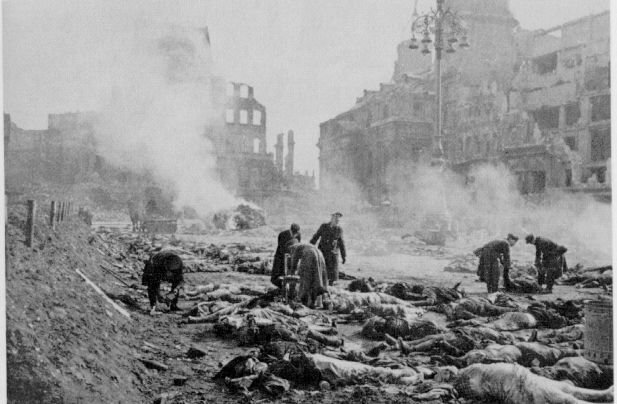
As a result, the humane concept of the leadership of Great Britain existed only until May 10, 1940, the day that Winston Churchill came to the post of Prime Minister after Chamberlain's death. The next day, on his go-ahead, the English pilots began to bomb Freiburg. Assistant Secretary of Aviation J.M. Speight commented on this event as follows: “We (the British) began bombing targets in Germany before the Germans began bombing targets in the British Isles. it historical a fact that was publicly recognized ... But since we doubted the psychological influence that the propaganda distortion of the truth could have had on the fact that it was we who launched the strategic offensive, we lacked the spirit to publicize our great decision, adopted in May 1940 of the year. We should have announced it, but we, of course, made a mistake. This is a great solution. ” According to the famous English historian and military theorist John Fuller, then "it was at the hands of Mr. Churchill that the fuse triggered, which caused an explosion - a war of devastation and terror, unprecedented since the Seljuk invasion."
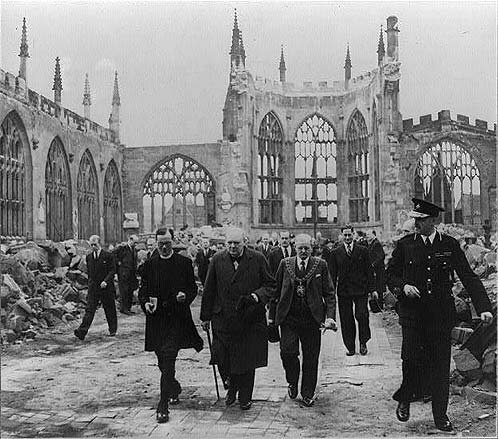
British bomber aircraft experienced a clear crisis. In August, 1941, Secretary of the Cabinet of Ministers D. Butt presented a report, which proved the absolute inefficiency of the bombers' raids that year. In November, Churchill was even forced to order the commander of bomber aviation, Sir Richard Percy, to limit the number of raids as much as possible until the concept of using heavy bombers was developed.
Debut possessed
Things changed for February 21 1942, when Marshal Arthur Harris became the new commander of the Royal Air Force bomber aircraft. A lover of figurative expressions, he immediately promised to “tear out” Germany from the war. Harris proposed to abandon the practice of destroying specific targets and to carry out bombing on urban squares. In his opinion, the destruction of cities should undoubtedly undermine the spirit of the civilian population, and above all the workers of industrial enterprises.
Thus, in the use of bombers there was a complete coup. Now they have become an independent tool of war that does not need to interact with anyone. Harris, with all his unbridled energy, began to turn bomber aircraft into a huge destruction machine. He promptly established iron discipline and demanded the unquestioning and quick execution of all his orders. Few people liked the “crackdown”, but Harris was the least worried - he felt the strong support of Prime Minister Churchill. The new commander categorically demanded that the government provide him with 4 thousand heavy four-engine bomber and 1 thousand high-speed fighter-bomber of the Moskito type. This would give him the opportunity to keep up over Germany up to 1 thousand aircraft overnight. The ministers of the “economic” bloc with great difficulty managed to prove to the frantic marshal the absurdity of his demands. The British industry simply could not cope with their fulfillment in the foreseeable future, if only because of a shortage of raw materials.
So on the first “raid of thousands of bombers” that took place on the night from 30 to 31 in May 1942, Harris sent everything he had: not only a few Lancaster, but also Halifax, Stirling, Blenheim , Wellington, Hempden, and Wheatley. A total of different types of armada consisted of 1 047 machines. At the end of the raid, the 41 aircraft did not return to the bases (3,9% of the total). Such a level of losses alerted many then, but not Harris. Subsequently, among the British Air Force, the loss of bomber aircraft was always the greatest.
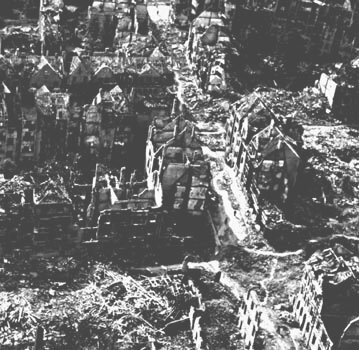 The first "thousand raids" did not lead to noticeable practical results, and this was not required. The raids were “combat training”: according to Marshal Harris, it was necessary to create the necessary theoretical basis for bombing and to back it up with flight practice.
The first "thousand raids" did not lead to noticeable practical results, and this was not required. The raids were “combat training”: according to Marshal Harris, it was necessary to create the necessary theoretical basis for bombing and to back it up with flight practice. In such "practical" classes, the entire 1942 year passed. In addition to German cities, the British bombed several industrial sites of the Ruhr, targets in Italy - Milan, Turin and La Spezia, as well as German submarine bases in France.
Winston Churchill estimated this period of time as follows: “Although we gradually achieved the precision we needed at night, the German military industry and the moral strength of the resistance of its civilian population were not broken by 1942 bombing of the year”.
As for the sociopolitical resonance in England regarding the first bombings, for example, Lord Salisbury and Bishop of Chichester George Bell repeatedly spoke out condemning such a strategy. They expressed their opinions both in the House of Lords and in the press, focusing the attention of the military leadership and society as a whole on the fact that strategic bombardments of cities cannot be justified from a moral point of view or according to the laws of war. But such sorties nevertheless continued.
In the same year, the first compounds of the American heavy bombers Boeing B-17 and Flying Fortress arrived in England. At that time, they were the best strategic bombers in the world, both in speed and altitude, and in armament. 12 heavy machine guns "Browning" gave the crew "Fortress" good chances to fight off the German fighters. Unlike English, the American command relied on precision bombing in daylight. It was assumed that a powerful barrage of hundreds of "B-17" flying in a closed formation, no one could break through. The reality was different. Already in the first "training" raids on France, the squadron of "Fortresses" suffered sensitive losses. It became clear that without a strong cover of fighters the result was not to be achieved. But the Allies could not yet produce long-range fighters in sufficient numbers, so that the crews of the bombers had to rely mainly on themselves. Thus, the aircraft operated until January 1943, when the Allied conference was held in Casablanca, where the main points of strategic interaction were identified: “It is necessary to disrupt and destroy Germany’s military, economic and industrial power and weaken the morale of its people so that it loses all ability to military resistance. "
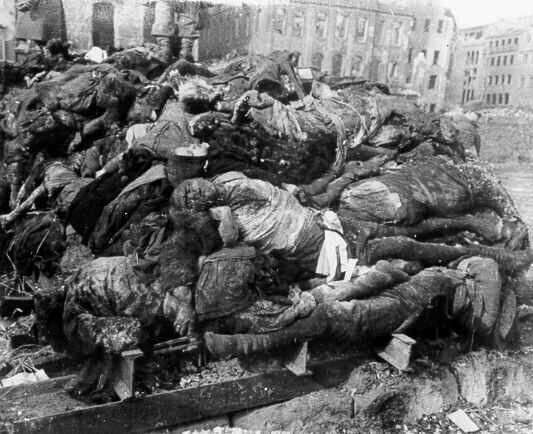
2 June, speaking in the House of Commons, Churchill said: “I can report that this year the German cities, harbors and centers of the war industry will be subjected to such a huge, continuous and cruel test that no country has experienced.” The commander of the British Bomber Aviation was instructed: "Start the most intense bombardment of industrial facilities in Germany." Subsequently, Harris wrote about it like this: “Practically I got the freedom to bomb any German city with a population of 100 thousand people and more”. Without postponing the case, the English marshal planned a joint operation with the Americans against Hamburg, the second most populous city in Germany. This operation was called "Gomorrah". Her goal was the complete destruction of the city and its conversion to dust.
Monuments of barbarism
At the end of July - early August 1943, 4 nighttime and 3 daytime mass raids were committed against Hamburg. A total of about 3 thousand Allied heavy bombers took part in them. During the first 27 raid of July, at one o'clock in the morning, 10 000 and explosives, mainly incendiary and high-explosive bombs, were dropped on densely populated areas of the city. For several days a fiery storm raged in Hamburg, and a column of smoke reached an altitude of 4 km. Even the pilots felt the smoke of the burning city, it penetrated into the cockpit. According to eyewitnesses, asphalt and sugar stored in warehouses were boiling in the city, glass melted in trams. Civilians burned alive, turning into ashes, or were suffocating from the poisonous gases in the basements of their own houses, trying to hide from the bombings. Or else - were buried under the ruins. In the diary of the German Friedrich Rehk, sent to Dachau by the Nazis, are stories about people fleeing Hamburg in their pajamas, who lost their memory or were distraught with horror.
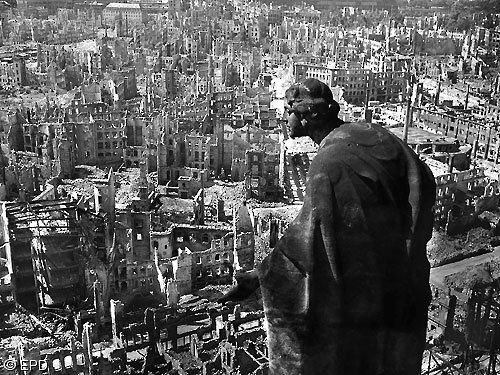
The city was half destroyed, more than 50 thousand of its inhabitants died, over 200 thousand were injured, burned and maimed.
To his old nickname "bomber" Harris added another - "Nelson Air." So it is now called in the English press. But nothing pleased the marshal - the destruction of Hamburg could not bring the final defeat of the enemy decisively closer. According to Harris, the simultaneous destruction of at least six major German cities was required. And for this, there was not enough strength. Justifying his "slow victories," he said: "I can no longer hope that we can defeat the largest industrial power of Europe from the air if I am given only 600 — 700 heavy bombers for this purpose.”
British industry could not, as quickly as Harris wished, make up for the loss of such aircraft. Indeed, in each raid the British lost an average of 3,5% of the total number of bombers involved. At first glance, it seems like a bit, but then every crew had to make 30 combat missions! If this quantity is multiplied by the average percentage of losses, then we get 105% losses. Truly killer mathematics for pilots, scorers, navigators and shooters. Few of them survived the fall of 1943 ...
sv: "Bearing in mind the Probability Theory, apart from mathematics, you need to be friends with logic! The task is extremely simple and what does Bernoulli have to do with it? For one flight 3,5% of planes die. Each crew makes 30 departures. The question is, how many chances does the crew survive? if we assume that every time 99,9% of planes die and at the same time make 1000 departures, even a tiny chance, but the chance to survive will always remain, that is, 100% (especially 105%) losses are nonsense, from a logical point of view And the solution to this problem is elementary. With one departure, the chance to survive is 96,5%, i.e. 0,965 With 30-tees, this number needs to be multiplied 30 times (build to 30 degree). We get 0,3434.Or, a chance to survive is more than one third! For 2 World War II, this is quite decent and only cowards did not fly ... "
dust: "The author was clearly not friends with math at school. His idea of multiplying the number of losses (3.5%) of British bombers by the number of sorties (30) I would say stupid. Writing that probability turned out to be 105% is not serious. In this In the example, probability theory tells us that we need to apply the Bernoulli formula. Then the result is completely different - 36,4%. Also, not joyful for KVVS pilots, but not 105% =)))) "
M. Volchenkov: "The author clearly folded 3,5% 30 once, which, to put it mildly, was not worth it. It is much better to multiply the survival probabilities.")
But the other side of the barricades. The famous German fighter pilot Hans Philip described his feelings in battle: “Fighting with two dozen Russian fighters or the English Spitfires was a joy. And no one thought about the meaning of life. But when seventy huge Flying Fortresses fly on you, all your previous sins stand before your eyes. And even if the lead pilot was able to gather his courage, then how much pain and nerves were necessary to make each pilot in the squadron cope with him, right up to the very beginners. ” In October 43, during one of these attacks, Hans Philip was shot down and killed. His fate was shared by many.
Meanwhile, the Americans focused their main efforts on the destruction of important industrial facilities of the Third Reich. 17 August 1943, the 363 heavy bomber attempted to destroy ball-bearing factories in the Schweinfurt area. But since there were no escort fighters, the losses during the operation were very serious - the 60 Fortress. Further bombing of the area was postponed for the month of 4, during which the Germans were able to restore their plants. Such attacks finally convinced the American command that it was no longer possible to send bombers without cover.
And three months after the failure of the Allies - November 18 1943 of the year - Arthur Harris began the "battle for Berlin." On this occasion, he said: "I want to incinerate this nightmarish city from end to end." The battle continued until March of 1944. 16 mass raids were committed on the capital of the Third Reich, during which 50 tons of bombs were dropped. Almost half of the city turned into ruins, tens of thousands of Berliners died. “Over the course of fifty, a hundred, and maybe even more years, the destroyed cities of Germany will stand as monuments of the barbarity of its winners,” wrote Major-General John Fuller.
One German fighter pilot recalled: “I once saw a nighttime raid from the ground. I stood in a crowd of other people in an underground metro station, the earth shook at every break of bombs, women and children screamed, clouds of smoke and dust penetrated through the mines. Anyone who did not experience fear and horror should have had a heart of stone. ” At that time the anecdote was popular: who can be considered a coward? Answer: a resident of Berlin who volunteered for the front ...
But still, the city could not be completely destroyed, and the proposal was born to Nelson Air: “We can completely demolish Berlin if the US Air Force takes part. It will cost us 400 — 500 aircraft. The Germans will pay defeat in the war. " However, American colleagues Harris optimism is not divided.
In the meantime, discontent with the commanders of bomber aircraft grew in the English leadership. Harris’s appetites increased so much that in March 1944, War Minister J. Grigg, presenting the Army’s budget project to Parliament, said: “I take the liberty to say that the production of heavy bombers alone employed as many as ". At that time, the British military production on 40 — 50% worked for one aircraft, and to meet the ever-increasing demands of the main scorer meant to bleed the ground forces and fleet. Because of this, admirals and generals, to put it mildly, were not too good at Harris, but he was still obsessed with the idea of “breaking out” Germany from the war. But with this just did not work. In addition, from the point of view of losses, the spring of the 1944 was the hardest period for British bomber aircraft: on average, losses over the flight reached 6%. 30 March 1944 German night fighters and anti-aircraft gunners shot down 96 from 786 aircraft during a raid on Nuremberg. It was a truly “black night” for the Royal Air Force.
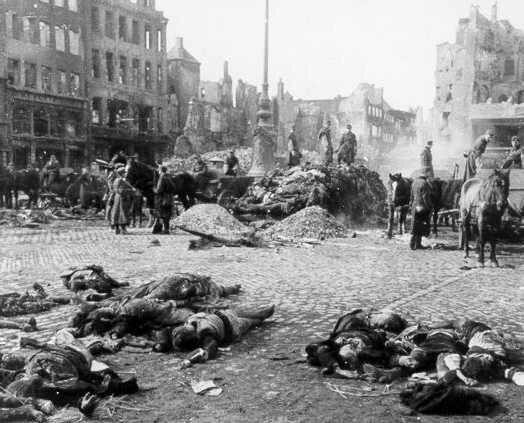
British raids could not break the spirit of resistance of the population, and the American raids decisively reduce the output of German military products. All sorts of enterprises were dispersed, and strategically important factories hidden underground. In February, 1944 of the year for several days, half of the aircraft plants in Germany were subjected to air raids. Some were razed to the ground, but very quickly production was restored, and factory equipment was moved to other areas. The release of aircraft continuously increased and reached its maximum in the summer of the 1944.
In this regard, it is worth noting that there is an amazing fact in the post-war report of the US Directorate for the Study of the Results of Strategic Bombings: it turns out that there was only one dibromoethane production plant in Germany for ethyl liquid. The fact is that without this component, which is necessary in the production of aviation gasoline, not a single German aircraft would have flown. But, oddly enough, this plant has never been bombed, nobody thought about it. But destroy it, the German aircraft factories could not touch at all. They could release thousands of aircraft that could only be rolled on the ground. This is how John Fuller wrote about this: “If in our technical age soldiers and pilots do not think technically, they do more harm than good.”
Curtain
At the beginning of 1944, the main problem of the Allied Air Force was solved: "Fortresses" and "Liberators" were defended by excellent Thunderbolt and Mustang fighters in large numbers. Since that time, the losses of the Reich air defense fighter squadrons began to increase. Ases was getting smaller, and there was no one to replace them - the level of training of young pilots compared to the beginning of the war was depressingly low. This fact could not help encouraging the allies. Nevertheless, it was becoming increasingly difficult for them to prove the feasibility of their “strategic” bombings: in 1944, the gross industrial output in Germany steadily increased. We needed a new approach. And they found him: the commander of US strategic aviation, General Karl Spaats, suggested concentrating on the destruction of synthetic fuel factories, while the chief marshal of British aviation, Tedder, insisted on the destruction of the German railways. He argued that the bombing of transport is the most realistic opportunity to quickly disorganize the enemy.
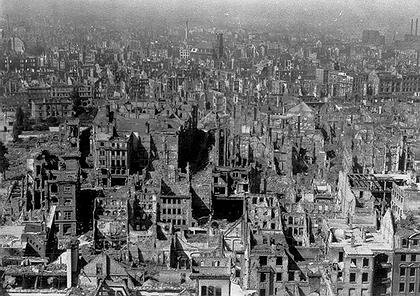 As a result, it was decided first of all to bomb the transport system, and in the second - fuel production plants. Since April 1944, the Allied bombing has indeed become strategic for a short while. And against their background, the tragedy in the small town of Essen, located in East Frisia, went unnoticed. ... On the last day of September 1944, due to bad weather, American planes could not get to one military plant. On the way back through the gap in the clouds, the pilots saw a small city and, in order not to return home with a full load, decided to free themselves from it. The bombs hit the school, burying 120 children under the ruins. It was half the children in the city. A small episode of a major air war ... By the end of 1944, German rail transport was almost paralyzed. Synthetic fuel production fell from 316 thousand tons in May 1944 to 17 thousand tons in September. As a result, fuel was not enough for either aviation or tank divisions. The desperate German counterattack in the Ardennes in December of the same year was drowned in many respects due to the fact that they were unable to seize the fuel reserves of the Allies. German tanks just stood up.
As a result, it was decided first of all to bomb the transport system, and in the second - fuel production plants. Since April 1944, the Allied bombing has indeed become strategic for a short while. And against their background, the tragedy in the small town of Essen, located in East Frisia, went unnoticed. ... On the last day of September 1944, due to bad weather, American planes could not get to one military plant. On the way back through the gap in the clouds, the pilots saw a small city and, in order not to return home with a full load, decided to free themselves from it. The bombs hit the school, burying 120 children under the ruins. It was half the children in the city. A small episode of a major air war ... By the end of 1944, German rail transport was almost paralyzed. Synthetic fuel production fell from 316 thousand tons in May 1944 to 17 thousand tons in September. As a result, fuel was not enough for either aviation or tank divisions. The desperate German counterattack in the Ardennes in December of the same year was drowned in many respects due to the fact that they were unable to seize the fuel reserves of the Allies. German tanks just stood up. Friends slaughter arms
In the fall of 1944, the Allies encountered an unexpected problem: there were so many heavy bombers and fighter jets that they did not have enough industrial targets: they couldn’t sit around without work. And to the full satisfaction of Arthur Harris, not only the British, but also the Americans began to consistently destroy German cities. The strongest raids were Berlin, Stuttgart, Darmstadt, Freiburg, Heilbronn. The climax of the massacre actions was the destruction of Dresden in mid-February 1945. At this time, the city was literally flooded with tens of thousands of refugees from the eastern regions of Germany. The 800 English bombers began the massacre on the night of 13 on 14 February. 650, thousands of incendiary and high-explosive bombs, were brought down to the city center. In the afternoon Dresden bombed 1 350 American bombers, the next day 1 100. The city center was literally wiped off the face of the earth. In total, 27 thousand residential and 7 thousand public buildings were destroyed.
How many citizens and refugees died is still unknown. Immediately after the war, the US State Department reported 250 thousand dead. Now generally accepted is the figure ten times smaller - 25 thousand, although there are other figures - 60 and 100 thousand people. In any case, Dresden and Hamburg can be put on a par with Hiroshima and Nagasaki: “When fire from burning buildings broke through the roofs, a column of hot air rose about six kilometers in height and three kilometers in diameter ... Soon the air heated to the limit, and that’s all what could have ignited was engulfed in flames. Everything burned to the ground, that is, there were no traces of combustible materials, only two days later the temperature of the fire had fallen so much that it was possible to at least approach the burned down area, ”witnesses.
After Dresden, the British managed to bomb Würzburg, Bayreuth, Zoest, Ulm and Rotenburg - cities that have survived from the late Middle Ages. Only in one town of Pforzheim with a population of 60 thousand people during a single 22 air raid in February 1945 a third of its inhabitants perished. Klein Festung recalled that when he was imprisoned in the Theresienstadt concentration camp, he saw the reflections of the Pforzheim fire from his cell window - in 70 kilometers from it. Chaos settled on the streets of destroyed German cities. The Germans, who love order and cleanliness, lived like cave dwellers, hiding in ruins. Around disgusting rats scurried around and fatty flies circling.
In early March, Churchill urged Harris to end the "areal" bombing. He literally said the following: “It seems to me that we need to stop the bombing of German cities. Otherwise, we will take the absolutely ruined country under control. ” Marshal was forced to obey.
"Guarantee" of the world
In addition to eyewitness accounts, the catastrophic consequences of such raids are confirmed by numerous documents, including the conclusion of a special commission of the victorious powers, which immediately after the surrender of Germany investigated the results of the bombings on the spot. With industrial and military facilities, everything was clear - no one expected a different outcome. But the fate of German cities and villages plunged the members of the commission into shock. Then, almost immediately after the end of the war, the results of the "areal" bombing could not be hidden from the "general public." In England, there was a real wave of indignation against the recent "bombardier heroes", the protesters repeatedly demanded that they be brought to justice. In the US, everything was calm enough. Such information did not reach the broad masses of the Soviet Union, and it would hardly have become timely and understandable. There were so many of their own ruins and their grief that there was no strength, no time for someone else, for the “fascist” - “so that they all would be empty there!”
How mercilessly this time ... Literally after a few months after the war, its victims were useless to no one. In any case, the first persons of the powers that defeated fascism were so anxious about the division of the banner of victory that, for example, Sir Winston Churchill hurried to officially disown responsibility for the same Dresden, for dozens of other German cities obliterated from the earth. It was as if nothing had happened and he did not personally make decisions about the bombing. It was as if, when choosing the next victim city at the end of the war, the Anglo-American command was not guided by the criteria of “the absence of military facilities” - “the absence of air defense systems”. The generals of the allied armies took care of their pilots and airplanes: why send them to where there is an air defense ring.
As for the war hero, and later the disgraced marshal Arthur Harris, he immediately after the military battle began writing the book Strategic Bombing. She came out already in 1947 year and sold a fairly large circulation. Many were wondering how the “leading scorer” would be justified. The author did not do this. On the contrary, he made it clear that he would not allow him to shoulder all the responsibility. He did not repent of anything and did not regret anything. Here's how he understood his main task as commander of bomber aviation: “The main objects of the military industry should be sought where they are in any country in the world, that is, in the cities themselves. It should be especially emphasized that, except in Essen, we have never made any particular plant the object of a raid. We have always considered a destroyed enterprise in the city as an additional success. Our main goal has always been the center of the city. All the old German cities are most densely built up to the center, and their outskirts are always more or less free from buildings. Therefore, the central part of cities is especially sensitive to incendiary bombs. ”
US Air Force General Frederick Anderson explained the concept of total raids: “Memories of the destruction of Germany will be transferred from father to son, from son to grandson. This is the best guarantee that Germany will never again start new wars. ” There were a lot of similar statements, and they all seem even more cynical after becoming acquainted with the official US Strategic Bombing Report from 30 of September 1945. On the basis of the research conducted at that time, this document states that the citizens of German cities lost their faith in future victory, in their leaders, in promises and propaganda to which they were subjected. Most of all, they wanted the war to end.
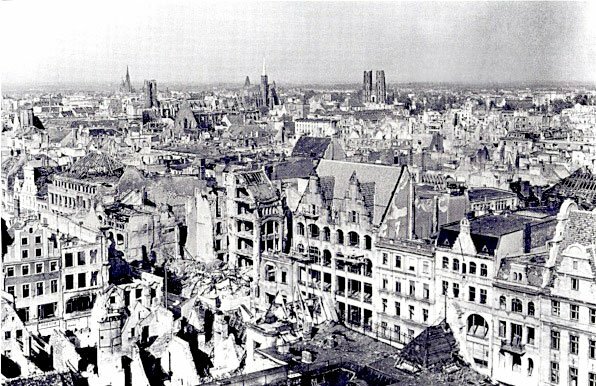
They increasingly resorted to listening to “black radio” (“black radio”), to discussing rumors and in fact turned out to be in opposition to the regime. Due to the current situation in the cities, the dissident movement began to grow: in 1944, one out of every thousand Germans was arrested for political crimes. If German citizens had the freedom of choice, they would have long ceased to participate in the war. However, under the conditions of a tough police regime, any manifestation of discontent meant: dungeons or death. Nevertheless, the study of official records and individual opinions shows that in the last period of the war, absenteeism increased, and production decreased, although large enterprises continued to work. Thus, no matter how the people of Germany were dissatisfied with the war, “they did not have the opportunity to openly express it,” the American report stresses.
Thus, the massive bombing of Germany as a whole was not strategic. They were only a few times. The war industry of the Third Reich was paralyzed only at the end of 1944, when the Americans bombed 12 factories that produced synthetic fuel, and the road network was out of order. By this time, almost all the major German cities were aimlessly destroyed. According to Hans Rumpf, they took the brunt of the air raids and thus defended industrial enterprises until the end of the war. "Strategic bombardments were directed mainly at the destruction of women, children and the elderly," the major general stresses. Of the total 955 044 thousand bombs dropped by the British on Germany, 430 747 tons fell on the city.
As for Churchill’s decision on the moral terror of the German population, it was truly fatal: such attacks not only did not contribute to the victory, but also pushed it aside.
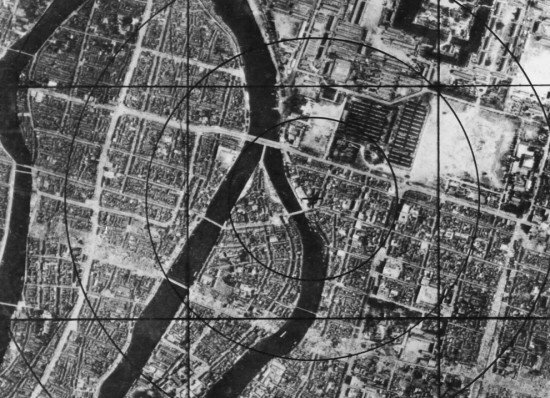
However, for a long time after the war, many well-known participants continued to justify their actions. So, in 1964, retired US Air Force Lieutenant General Ira Iker commented as follows: “I find it difficult to understand the British or Americans crying over those killed from the civilian population and not shedding tears over our valiant warriors who died in battles with a cruel enemy. I deeply regret that bomber aircraft of Great Britain and the United States killed 135 thousands of Dresden residents during a raid, but I do not forget who started the war, and even more regret that more than 5 millions of lives were given by the Anglo-American armed forces in a bitter struggle for complete destruction of fascism. "
The British Air Marshal Robert Sondby was not so categorical: “No one would deny that the bombing of Dresden was a great tragedy. It was a terrible misfortune, which sometimes happens in wartime, caused by a cruel coincidence. Those who sanctioned this raid acted not out of malice, not out of cruelty, although it is likely that they were too far from the harsh reality of the hostilities to fully understand the monstrous destructive force of the 1945 air bombardment of the year. ” Is the English air marshal really naive enough to justify the total destruction of German cities in this way? After all, “cities, and not piles of ruins are the basis of civilization,” wrote the English historian John Fuller after the war.
Better about the bombing, perhaps not say.
The origin of the doctrine
The very use of the aircraft as a means of warfare at the beginning of the 20th century was a truly revolutionary step. The first bombers were clumsy and brittle-looking structures, and it was not an easy task for pilots to fly to them even with a minimum bomb load. About the accuracy of the hits did not have to say. In World War I, bomber aircraft did not gain great fame, unlike fighter jets or ground-based “miracle weapons” - tanks. Nevertheless, supporters and even apologists appeared among the "heavy" aviation. In the period between the two world wars, perhaps the most famous of them was the Italian general Giulio Douai.
In his writings, Douai tirelessly argued that only aviation could win the war. Ground forces and fleet should play a subordinate role in relation to it. The army holds the front line, and the fleet protects the coast while the aircraft gains victory. Bombing should be first of all the city, not the factories and military facilities, which are relatively easy to relocate. Moreover, it is desirable to destroy the city in one raid, so that the civilian population does not have time to take out wealth and hide. It is necessary not so much to destroy as many people as possible, how to sow among them a panic, break morally. Under these conditions, the enemy soldiers at the front will not think about victory, but about the fate of their loved ones, which will undoubtedly affect their fighting spirit. To do this, it is necessary to develop precisely bomber aircraft, and not fighter, sea or any other. Well-armed bombers themselves are able to fend off enemy aircraft and deliver a decisive blow. Who will be the most powerful aircraft, he will win.
The “radical” views of the Italian theorist were shared by very few. Most military experts believed that General Duee had overdone it by absolutizing the role of military aviation. Yes, and calls for the destruction of the civilian population in 20-s of the last century were considered blatant moveton. But, be that as it may, it was Giulio Due that among the first to understand that aviation gave the third dimension to the war. With his "light hand" the idea of unlimited air war firmly settled in the minds of some politicians and military leaders.
Loss in numbers
In Germany, bombing killed, according to various estimates, from 300 thousand to 1,5 million civilians. In France - 59 thousand dead and wounded, mainly from Allied raids, in England - 60,5 thousand, including victims from the actions of missiles "Fau".
The list of cities in which the area of destruction was 50% and more of the total area of buildings (oddly enough, only 40% fell on Dresden):
50% - Ludwigshafen, Worms
51% - Bremen, Hannover, Nuremberg, Remscheid, Bochum
52% - Essen, Darmstadt
53% - Cochem
54% - Hamburg, Mainz
55% - Neckarsulm, Zoest
56% - Aachen, Münster, Heilbronn
60% - Erkelenz
63% - Wilhelmshaven, Koblenz
64% - Bingerbrück, Cologne, Pforzheim
65% - Dortmund
66% - Crailsheim
67% - Gisen
68% - Hanau, Kassel
69% - Duren
70% - Altenkirchen, Bruchsal
72% - Geilenkirchen
74% - Donauworth
75% - Remagen, Würzburg
78% - Emden
80% - Prüm, Wesel
85% - Xanten, Zulpich
91% - Emmerich
97% - Julich
The total volume of debris was 400 million cubic meters. 495 architectural monuments were completely destroyed, 620 was damaged so much that their restoration was either impossible or doubtful.
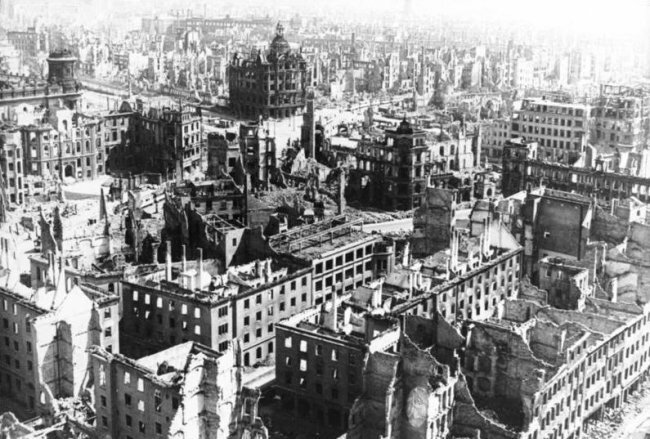
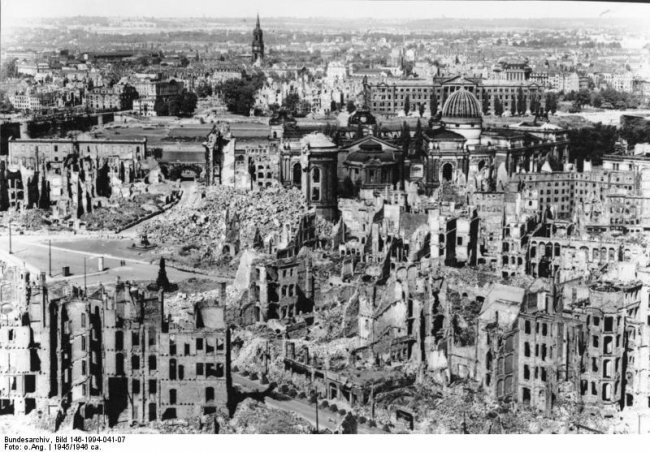
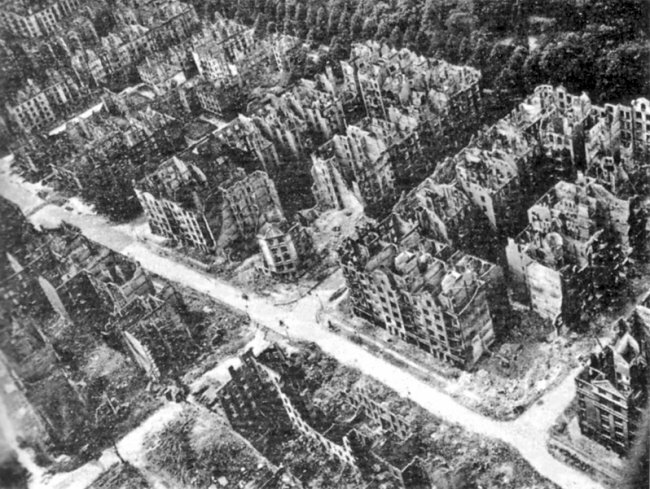
Information